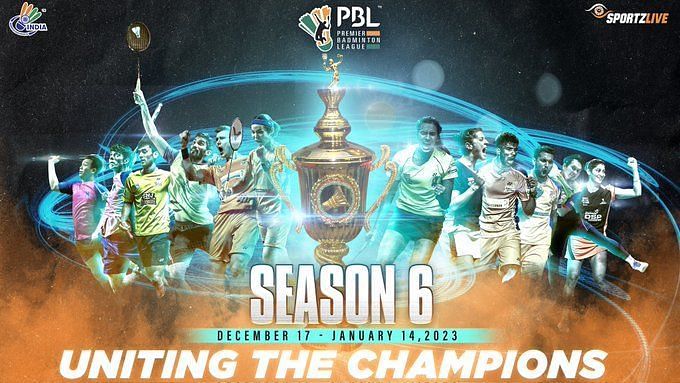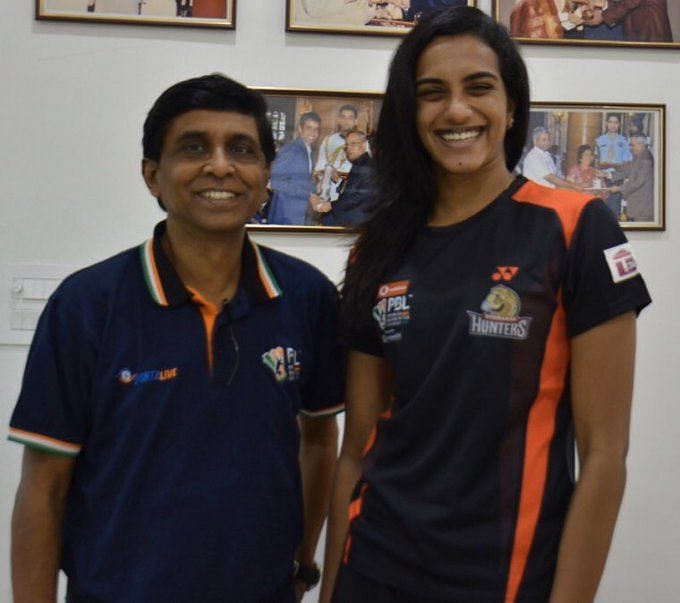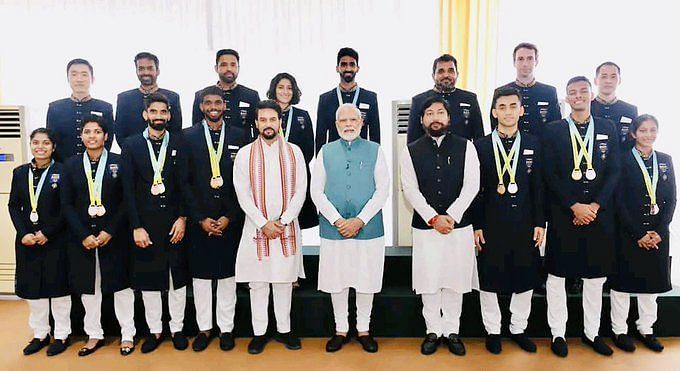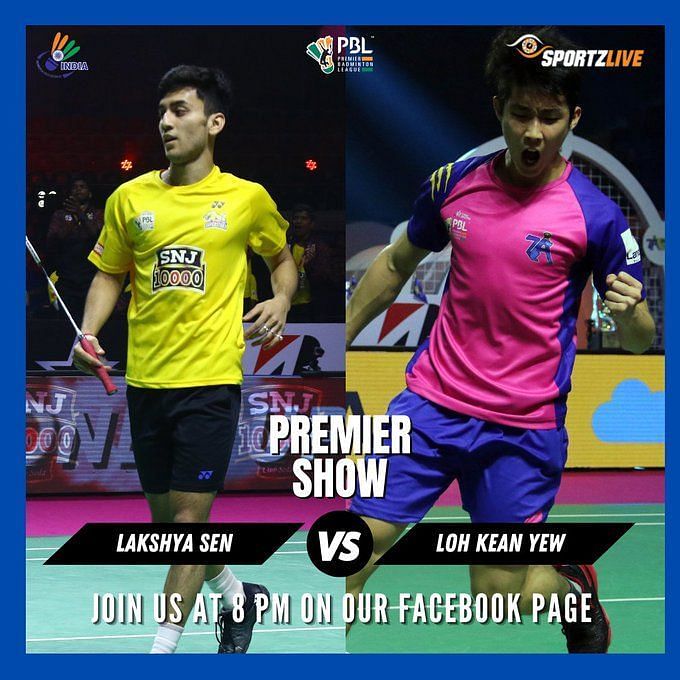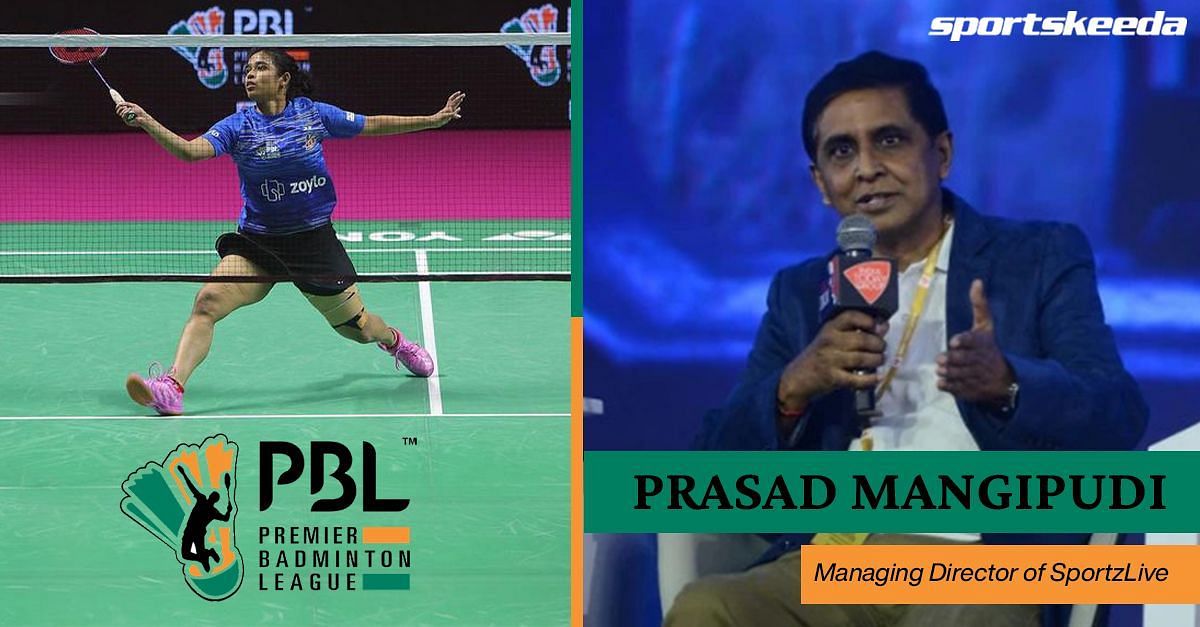
“Badminton the best performing Olympic sport today, will launch leagues in regional cities”: Prasad Mangipudi, Managing Director, PBL organizers Sportzlive
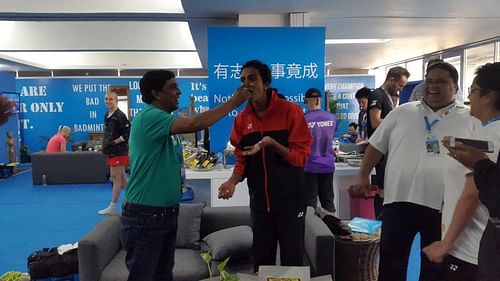
The Premier Badminton League (PBL) has done a marvelous job of honing young Indian talent and pushing them to new heights. There is no doubt that India is seeing its golden generation of badminton players today. This been reflected in the nation's six-medal haul, including three golds, at the recent Commonwealth Games in Birmingham.
The likes of Satwiksairaj Rankireddy, Chirag Shetty, Lakshya Sen, and countless others have risen through the ranks after they found their footing via PBL, the premier badminton tournament in the country.
Sportzlive the licensee holder of the league under the aegis of BAI is making a comeback after two years, with its sixth season beginning on December 17, 2022. Comprising six city-based franchises, the PBL has seen the participation of big Indian names such as Saina Nehwal, PV Sindhu, and Kidambi Srikanth, as well as international stars like Carolina Marin, Viktor Axelsen, Tai Tzu-Ying and Lee Chong Wei, among others.
The catalyst behind the tournament scaling new heights is Prasad Mangipudi, the managing director of SportzLive. Prasad, the co-founder of PBL's commercial partners, has seen the league grow since day one. He knows the ins and outs of how to make a “non-cricket” league successful in a cricket-crazy nation.
Sportskeeda caught up with Prasad Mangipudi for an exclusive chat about PBL's commercial success over the years.
Excerpts from PBL managing director Prasad Mangipudi
Q: With the PBL making its much-awaited return after two years, the pandemic must have changed the way such high-profile tournaments will be conducted in this post-covid era. How does it feel to make a comeback?
A: For the past five seasons, until Covid hit us, PBL was our life. It became our identity. Whatever image we built, it was all around badminton. And it luckily coincided with the growth of the game, because, in 2015, when it began, Sindhu hadn’t won her Olympic medal yet.
The Asian Games, Commonwealth Games, the Tokyo medal and the Thomas Cup all came later. So we have just been waiting to get back on the court with an adrenaline rush. We recently managed to get the dates from BWF and BAI, and the only window we have is in December, when the players are free.
Another milestone for us was that, for the first five years, the complete contract was sold to Star Sports. They were managing sponsorships, marketing, and broadcasting. We were just running the league, the players, the operations, etcetera. So we didn’t have a way to promote the league ourselves directly.
The contract ended in 2020, so we now have 100 per cent control of the league. We have so many ideas for the league. We have also decided to have a session on innovation with the players, officials, and even the media. At the end of the day, what you are offering is entertainment, whether it be IPL, PBL, PKL, or EPL.
We are trying to figure out the changes we can bring without altering the DNA of the game. We are also trying to make it bigger in terms of sponsorships. Since we began in 2015 — when the contract was given to Star Sports — we have discovered the right value of the league, so that everybody involved also receives their share, including the teams and the players.
Q: What are some new things that we may see in the upcoming season of PBL?
A: Like I said, it could be the game format itself. It could be new camera angles. We could have players’ POV, there could be a lot of things. As you know, there are new technologies like AI, VR, etc., so we can make an immersive experience for the audience. We will have a meeting shortly, first with the team owners and then with the other stakeholders. I also plan to talk to players like Sindhu and listen to their opinions since they have played for five seasons.
Q: Throughout the seven years since the PBL started, the relationship between the stakeholders has evolved significantly, especially considering the two-year-long pandemic period in between. Can you elaborate on it?
A: During the pandemic, the only thing we could do was to be in touch. Last year was so bad; everyone was concerned about surviving. I lost my father, my mother-in-law, and my brother-in-law. In the second half of 2021, we realized that the worst was over, so we started talking to people. Players started calling us about our plans. We explored having it last year, but due to travel restrictions and quarantine, we didn’t have enough time to plan like the IPL.
They even suggested we move the tournament to Dubai but BAI said that it should remain in India since it is an Indian League. The good news is that the number of sponsors interested in sports has gone up thanks to the IPL. Almost 200 brands are investing in sports now. Now it's a matter of extending them to us. Ours is a little more of a family sport. You don’t see families playing cricket or soccer together. Badminton is the only sport the family can play together. So now we have a sharper idea about where the game is popular.
Q: Media rights have become a much-discussed subject in the public domain, especially since the media rights auction of the Indian Premier League attracted massive numbers. How do you think that will affect the broadcasting situation of the PBL?
A: Given the base at which we began, we will go up. We have set a figure in our minds. All three — Star Sports, Sony and Viacom — have held meetings with us and expressed interest in the league. The alternative idea is that this year we produce it ourselves and just give it to broadcasters to broadcast, and once the league is back in people’s consciousness, it will attract a higher value.
So it is a bit early for me to speak on whether we are selling the broadcast rights right now. In the past, when Star Sports had broadcasting rights, they didn’t sell international rights, so there were no broadcasts outside the country. But since we have several players from Indonesia, Thailand, Korea, and Denmark, there is that interest there.
So if Viktor Axelsen or Lee Chong Wei are playing here in India, they will be even more interested. So this year, we may separate these rights between digital, domestic, and other global territories like Europe and South East Asia. For example, last year, we noticed that one channel in Taiwan was covering Tai Tzu’s game during the league. It felt very good to see that.
Q: In the last seven years since its inception, the PBL has established itself as a successful sports brand in an extremely competitive sports market. How do you approach the competition while creating a special space for yourself in the market?
A: I have two figures in mind. In year one, we had about 10 million viewers, and by year three, we had reached 40 million. We wonder why the Pro Kabaddi League gets so much attention. It is owned by Star Sports and broadcast on over 21 channels, including free-to-air channels. This is what we call carpet bombing.
So in season four, we also experimented by picking up a free-to-air channel - Star Utsav. That year, our viewership jumped to 160 million, which made us realize that we have a hardcore following of about four crores. We now know that now that we have the rights again, there is a large segment waiting to be tapped.
We will try to reach the demographics geographically, gender-wise, age group-wise, etcetera. Secondly, after cricket and soccer, badminton is the largest-growing game by participation on the ground. You may have PKL being much larger in viewership, but in badminton, the number of academies that are growing is phenomenal.
I believe Bengaluru has around 16-17 academies and 3000-4000 courts. Today, crowds are booking courts even at midnight. Badminton is the best performing Olympic sport today. I was speaking to Pullela Gopichand and he said that in the last five to six years, the team has met PM Modi six times on account of their success.
Today, the Thomas Cup is the world cup of badminton and India is its champion. Every major tournament has at least four to five Indians in quarters and one to two in the finals. It is the only sport which is being broadcast 12 months a year, earlier by Star Sports and now by Viacom. These are the factors that make us believe in ourselves.
Q: Sports in India have boomed since sports leagues started broadcasting in regional languages. The Premier Badminton League is no stranger to the same. What are some of the effects of reaching the regional audiences on a league?
A: Season five of the PBL was broadcast in Kannada, Tamil, and Telugu, and whichever channel the broadcasting rights will go to next will have to keep regional languages in mind. Regional channels have also established themselves on a larger scale now. We are also in the process of identifying players from those states to become commentators. We will also get talent from those states to help us grow in those markets.
We have found that badminton is predominantly popular in the South. An important point to note is that badminton is one of the better-administered sports in the country and for that, I must give credit to the federation for running the sport smoothly.
Q: Any sport can grow in a country only when it has a strong foundation at the grassroots. What are your plans to grow the tournament on a regional leve?
A: In 2019, we were very close to launching a Telugu league. The plan initially was for the first five years, we will do the national league, and once we are set there, we will move to a regional level like your TNPL and KPL in cricket.
So once we relaunch the league this year, we will look to launch leagues in these regional cities. We were also on the verge of launching a junior PBL and a corporate PBL in 2019. But Covid has pushed [back] all our plans. Such leagues will surely allow talent to grow organically. A team in the PBL may not always give opportunities to youngsters and would prefer to play established players.
Q: Who are some of the PBL's finds over the last five years?
A: A simple example is that in season two or three, Satwiksairaj Rankireddy was sold for eight lakh rupees. A few seasons later, he received 65 lakh. His parents called him and us to scold him about why he was being paid so much! They got to know from somewhere that Satwik was planning to buy a sports car, and they were angry that a 19-year-old was getting so much money. The other player is Lakshya Sen. He has played for three seasons and received the opportunity to interact with the best players in the world.
In season three, HS Prannoy was unbeatable and went on to become the world number eight after that. After his unfortunate injury, he is on his way to the top. Even Gopichand’s daughter Gayatri won a game against Tai Tzu in season five, and I’m sure she will remember it all her life.
Later, in doubles, she went on to reach the semi-finals of the All England Open, while Lakshya reached the finals.
Q: What are the challenges of balancing the sports and the spectacle value of the tournament?
A: It is a big challenge. I remember a year when we tried the 11-point format, and I must be very blunt with you - we faced a great deal of flak over it. I remember there was a match involving Sindhu which got over before the audience could enter the stadium. It was over in just 12-13 minutes.
The trump card is a great innovation that we came up with because there were times when the team was leading 2-0 and they faced the trump player of the opposition team. A trump game is where the team playing the trump card has an opportunity to win two points. We have seen many underdog teams making a comeback in this way.
If you beat the other team's trump card, the other team will also lose a point. We also launched a campaign called Superfans. We got more than 1000 people to sign on to it. So as the league gets closer, we will also interact more with them and get their opinions.
Q: What is the future of the league and the prospects we will get to see this year?
A: There is Priyanshu Rajawat, who played last season as well. There is Malavika Bansod, who beat Saina Nehwal at the Indian Open. The UAE government has asked us to bring the tournament there. The other good news is that Gopichand has opened several academies, one in Mizoram, one in Raipur, one in Bhubaneshwar, and another in Hyderabad. He is currently scouting talent in Arunachal Pradesh as well. So we hope to see more Sindhus and Sainas. Also, we have seen a lot of companies like Kotak, Dalmia, and Tata investing in the sport, so we hope more sponsors will come to badminton.
